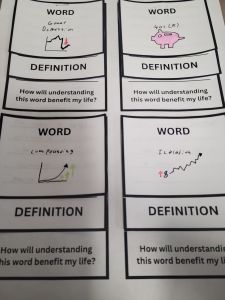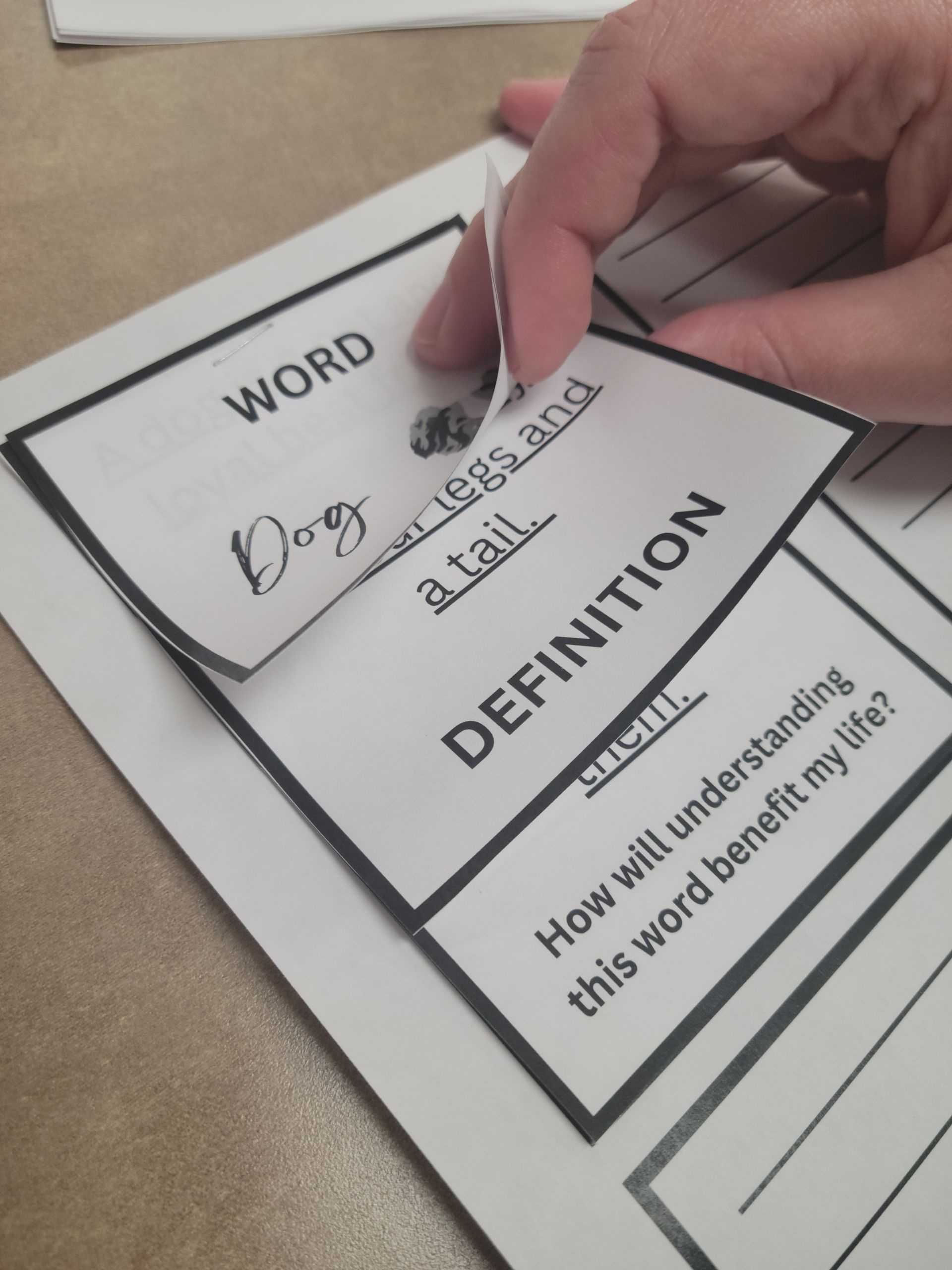This year I decided I wanted to try something different with vocabulary words. In the past I would pick words or use vocabulary words chosen by the text and have students complete different assignments incorporating those words. These assignments were NOT popular with the students. “We are going to do a vocab quad,” would be followed by groans from the seats.
This year, I incorporated “Word Walls” into each unit, chapter, and book study. Now, “Word Walls” are not new; teachers have been using them for years. However, I gave students complete autonomy with these walls, and the results have included much less whining from the students. In fact, I think they almost enjoy having a say in the key words and concepts their education is based around.
“I gave students complete autonomy with these walls, and the results have included much less whining from the students.”
How it Works

We rarely work within a textbook in my classes. Online articles, books, videos, and news stories are where we get the majority of the information we work with. Working with this “Word Wall” concept, students are always equipped with a scratch piece of paper or a highlighter to mark terms they don’t know, need more information on, or think are important to our subject matter. These are the words we display on our “Word Wall.” We take these words and discuss them further as a class, research them in small groups, or complete activities with these terms.
When reading new articles, I have students complete an article annotation worksheet as they read. Part of this worksheet requires students to circle important words and underline terms they are unfamiliar with. These are added to the wall as well.
Click Here for Article Annotation Worksheet
Everytime we start a new book study we start a new “Word Wall.” Everytime we start a new unit, we start a new “Word Wall.” We have more “Word Walls” in my classroom than actual walls. This process has been a night and day difference with my students from traditional vocabulary practices.
This process has also been incredibly helpful for me as the teacher. There have been several times students have put terms on the “Word Wall” I thought they would have knowledge of from previous classes or experience. Students feel more comfortable asking what a word means when they don’t feel I think they should already know it. Also, words can be added if students think it is important, so even if they don’t want to admit they don’t completely understand something, they can add it as an “important” word and we will still work through clarifying that term. Students are understanding and retaining the information better because they are asking questions, helping other students and researching without the fear of looking “dumb” to their classmates.
“Mixing it up a bit and having students define key terms in multiple ways, not only gives them more ownership over their learning, it activates different parts of their brain for better understanding.”

Flip Chart Activity
One of the vocabulary activities I work into rotation is the “Word Wall Flip Chart” activity. Students choose terms from the wall and create a small “flip chart” for each term. They draw a picture or graphic representing the term, define the term in their own words, and describe why knowing this term is important. This activity can be done at any time: midway through a book or unit or at the end. Having students put these terms in their own words and understanding why they are important and useful will make them stick!
Click her for the Word Wall Flip Chart Activity
Mixing it up a bit and having students define key terms in multiple ways, not only gives them more ownership over their learning, it activates different parts of their brain for better understanding. You could find other ways to incorporate these terms into an assignment: create a poem or song, make a brochure, act them out. No matter what you do with your “Word Wall” words, this process produces better results than traditional vocabulary assignments.
Resources
Please login or register to claim PGPs.
Alternatively, you may use the PGP Request Form if you prefer to not register an account.



